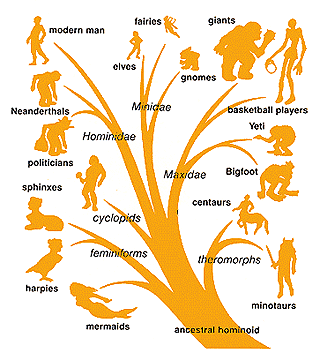 "Do not meddle in |
    |
Posted on 11/05/2003 11:12:53 AM PST by mjp
NASHVILLE, Tenn. – When we experience an illusion, we usually have the impression we have been fooled, or that our minds are playing tricks on us. New research published in the Oct. 31 issue of the journal Science indicates our perceptions of these illusions are no hoax, but the result of how the brain is organized to process the information it receives from our senses.
Vanderbilt University psychology department researchers Anna Wang Roe, Li Min Chen and Robert Friedman have identified responses in the brain to a touch illusion that shed new light on how the brain processes sensory information and call into question long-held theories about the nature of the "map" of the body in the brain.
Walter Penfield is credited with first establishing in 1957 that a map of the human body exists in the brain, with specific areas of the cortex processing information from different body areas. Researchers have long hypothesized this map is a topographic map of the physical body.
"What is surprising about this paper is we found the cortical map reflects our perceptions, not the physical body," Roe said. "The brain is reflecting what we are feeling, even if that's not what really happened." The team completed the research at Yale University before moving to Vanderbilt this fall.
Roe's research used a well-documented illusion called the tactile funneling illusion to explore how the brain processes touch. With this illusion, an individual perceives simultaneous touches to multiple locations on an area of skin as a single touch at the center of that area. Although the perception of this illusion has been studied for decades, researchers did not know how it was processed by the brain.
Roe's team first tested the funneling illusion in humans by stimulating adjacent fingers. The human subjects confirmed that they experienced a sensation between the two fingers when both were touched simultaneously. The team then used a technique called intrinsic signal optical imaging to study the reaction to the same illusion in the brains of squirrel monkeys. Intrinsic signal optical imaging uses a specially designed video camera to detect changes in light reflectance viewed through a "window on the brain." These cortical reflectance changes are related to changes in blood flow that occur when neurons respond to specific sensory stimuli.
When the monkeys were touched on one digit alone, the researchers observed a response in Area 3b of the somatosensory cortex, the area previously determined to process information from that digit. When an adjacent digit was stimulated on its own, a response was seen in the cortical map for that digit. However, when the monkey was touched simultaneously on both digits, a single cortical location between the maps of the two individual digits responded, explaining the perceived location of the illusion. In addition, the perceived intensity of this illusion is caused by the integration of activity across all three locations (two actual, one illusory).
"The merger of signals from adjacent fingers demonstrated in this elegant study may serve an important function in hand use," Esther Gardner, professor of physiology and neuroscience at NYU School of Medicine, said. "It allows the fingers to be controlled as a single functional group centered opposite the thumb when grasping large objects, rather than as distinct individuals." In addition to establishing that the cortical map reflects perception rather than physical location, the researchers found the brain processes touch perceptions at an unexpectedly early stage.
"The cortical area we studied, 3b, is an early entry level in the cortex for information from the skin," said Friedman. "We did not expect to see perception being reflected that early. This gives us a much better understanding of how much work the brain is doing, even at this early level of processing."
"How we perceive the world is an enduring question in neuroscience," Mriganka Sur, head of the Massachusetts Institute of Technology Department of Brain and Cognitive Sciences, said. "This is a fascinating study that cleverly uses a tactile illusion to demonstrate that the brain's representations of the world, and of sensory stimuli that impinge on us, are shaped by the brain's circuitry. In short, our perceptions have a great deal to do with the way our brains are wired."
Roe's team will continue to study how the brain processes sensory input and illusions, though Roe cautions against misinterpretation of that term. "Illusions are not unusual or strange--they are how we interpret the world," Roe said. "We think we know what's out there in the physical world, but it's all interpreted by our brains. Everything we sense is an illusion to a degree."
--------------------------------------------------------------------------------
This story has been adapted from a news release issued by Vanderbilt University.
 "Do not meddle in |
    |
I figured this out in high school.
I'm glad that cutting edge science is finally catching up to my philosophical speculations!
Now if they'll only start producing that personal jet pack.....
Seriously. And the hovercraft. One decent foray into Psilocybe Mushrooms would yield the same results as this study, albeit informally.
Perhaps I'm an aberration, but I just informally tried this, and did not perceive it as a single touch at the center of the area. I used a couple of pencils, and was able to differentiate the two locations.
OTOH, I have found that in some cases, a pair of stimuli does produce a centralized response....


At the bottom is the nea ... aclu --- dept of education (( rat's nest republicans )) !
Disclaimer: Opinions posted on Free Republic are those of the individual posters and do not necessarily represent the opinion of Free Republic or its management. All materials posted herein are protected by copyright law and the exemption for fair use of copyrighted works.